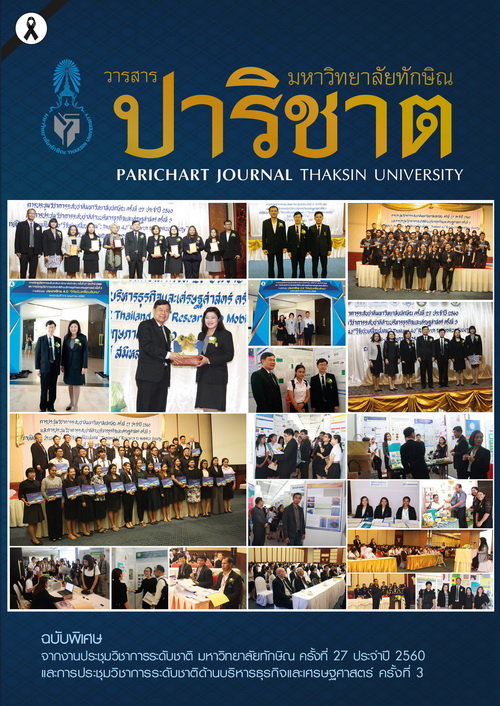Application of Participatory Geo-informatics for Sago Palm Database Preparation in Phatthalung Province.
Main Article Content
Abstract
This research aimed to study the utilization and guidelines in the management of sago palm forest through community participation in 8districts of Phatthalung Province. The study utilized the combined quantitative and qualitative approaches, whereby the quantitative research was conducted using
geographic instruments such as GPS, Arc GIS software package and satellite images from the Google Earth application for surveying existing sago forests in 8 districts of Phatthalung Province. The qualitative approach was conducted by interviewing eighty respondents involved with sago utilization in eight districts
revealing the following information for planting areas: 23 rais in Si Banphot, 12 rais in Pa Phayom, 224 rais in Khuan Khanun, 72 rais in Srinagarind, 65 rais in Meuang district, 9 rais in Kongra, 53 rais in Khaochaison and 52 rais in Bang Kaew. A total area for sago palm plantations in these districts combined was 510 rais. The results of the qualitative study revealed that during the past 10 years (2006 - 2016), the sago palm forests were rapidly destroyed and the planting areas were likely to decrease due to dredging of watercourses by local agencies and government agencies. The utilization of the sago palm was also reduced to a certain extent because of the fact that sago palm had received less attention but more destruction. Utilization of sago palm is found in the form of flour extracted from the trunk to make local desserts. A trunk has been used to culture beetles, bark from leaf sheath for making mats and leaves for making roof thatches. Revenue earned from sago palm is about 4,000 baht per month per household. In terms of ecology, sago palm helps create rich natural resources for wetlands. It is a source of water absorption for soil, helps slowing down the speed of water and habitation of aquatic and land animals. Sago palm forest is vital to the ecosystem and socio-economic balance. For the sago palm forest management, the appropriate approach is the Pracha Rath - participatory public policy for local and national sago palm forest management in order to solve the problem of decreasing sago palm forest area and to promote the benefits of sago palm so that sago remains in line with the way of life of the villagers


